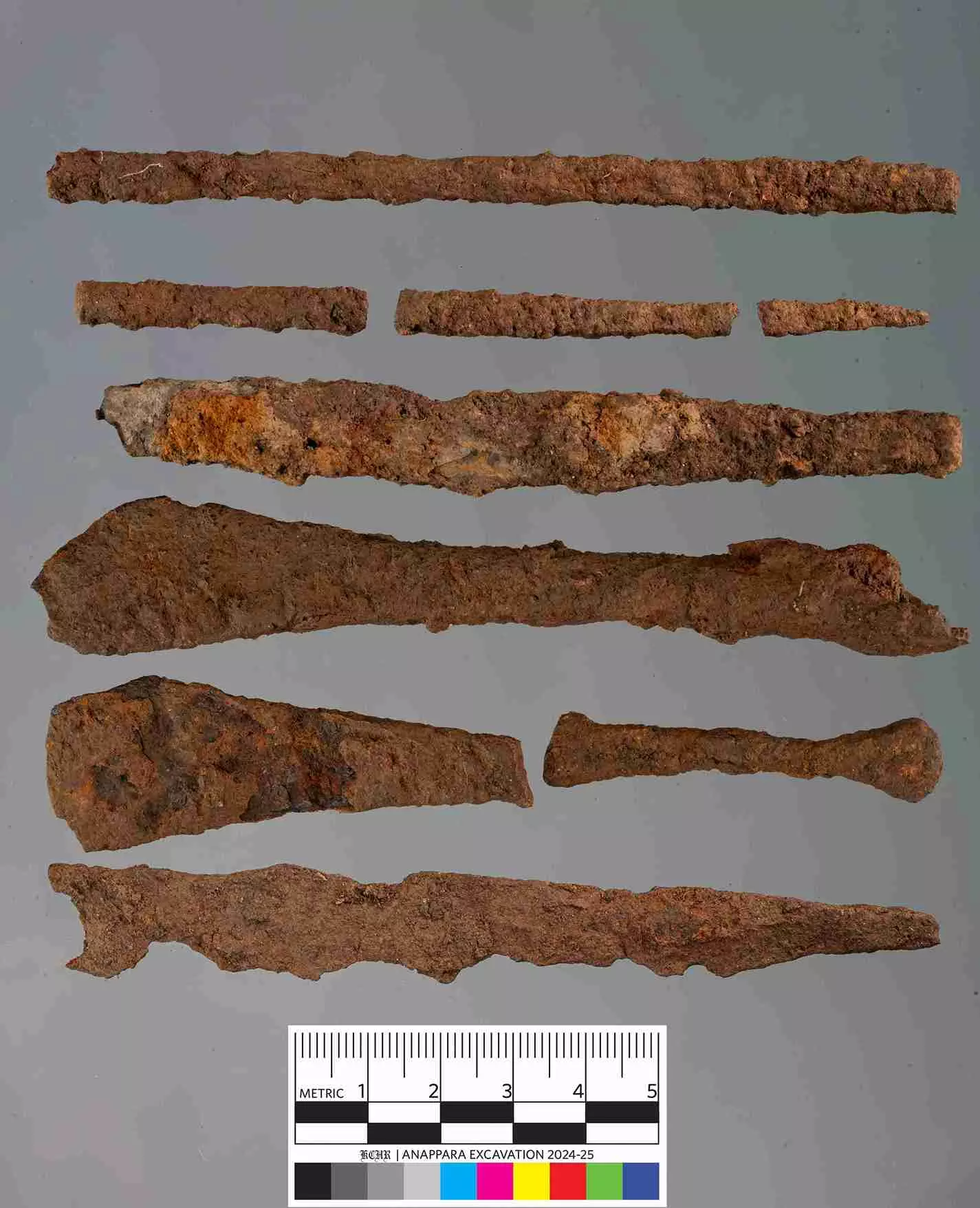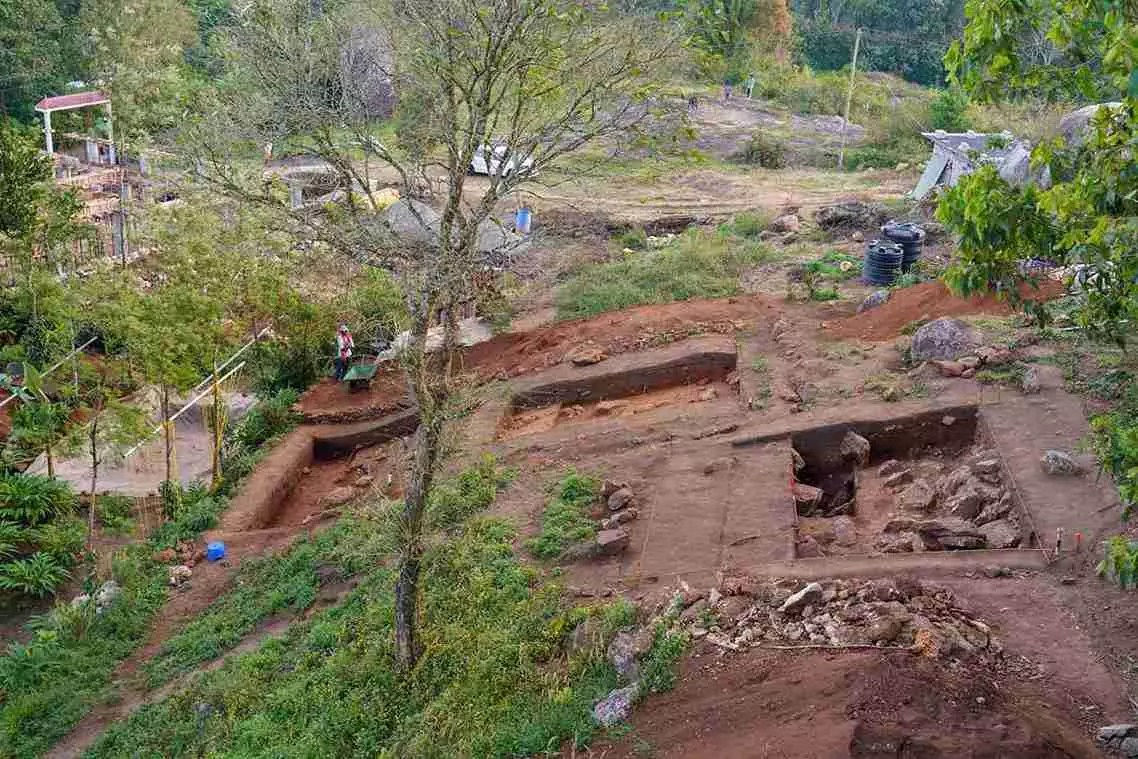
- Home
- India
- World
- Premium
- THE FEDERAL SPECIAL
- Analysis
- States
- Perspective
- Videos
- Sports
- Education
- Entertainment
- Elections
- Features
- Health
- Business
- Series
- In memoriam: Sheikh Mujibur Rahman
- Bishnoi's Men
- NEET TANGLE
- Economy Series
- Earth Day
- Kashmir’s Frozen Turbulence
- India@75
- The legend of Ramjanmabhoomi
- Liberalisation@30
- How to tame a dragon
- Celebrating biodiversity
- Farm Matters
- 50 days of solitude
- Bringing Migrants Home
- Budget 2020
- Jharkhand Votes
- The Federal Investigates
- The Federal Impact
- Vanishing Sand
- Gandhi @ 150
- Andhra Today
- Field report
- Operation Gulmarg
- Pandemic @1 Mn in India
- The Federal Year-End
- The Zero Year
- Science
- Brand studio
- Newsletter
- Elections 2024
- Events
Why the recent archaeological excavation in Idukki’s Anappara is significant

A recent archaeological excavation, conducted by the Kerala Council for Historical Research (KCHR), in Anappara in Kerala’s Idukki district, revealed an early historic settlement in the hilly region. The geographical context of the site and the finding of the excavation indicate that Anappara might have served as a market where the merchants, farmers and forest dwellers exchanged...
A recent archaeological excavation, conducted by the Kerala Council for Historical Research (KCHR), in Anappara in Kerala’s Idukki district, revealed an early historic settlement in the hilly region. The geographical context of the site and the finding of the excavation indicate that Anappara might have served as a market where the merchants, farmers and forest dwellers exchanged their commodities. The region was a major source of spices throughout history. During the early historic Indian Ocean and Indo-Roman exchange period, this region would have supplied the forest resources, apart from acting as a conduit between the East Coast and West Coast, according to Dinesan Vadakiniyil, director of the KCHR.
It was after getting permission from the ASI that the researchers of the KCHR started excavating the site in 2024. “The excavation has revealed very clear evidence for early historic settlement on the slope of Anappara rock,” said KN Ganesh, chairman of KCHR.

Even though many archaeological excavations have been conducted in Idukki, the recent one attains significance. Why? Although Kerala has megalithic burials in abundance, settlement evidence associated with the megalithic burials are almost nil in the state. Hence the findings of the Anappara excavation with settlement evidence is significant. If that’s the case, the findings in the excavation will help reaffirm the role of the Western Ghats as an important resource base which supported communities from the prehistoric times.
In the Early Historic period the spice and other natural wealth of the mountain was traded through the coastal port towns from Arikamedu, Kaveripoompattinam, Alagankulam, Korkai on the East Coast to Becare, Muziris, Tyndis and Naura on the West Coast, across the Indian Ocean, said Dineesh Krishnan and V Selvakumar, who led the excavations. They said the findings of carnelian, agate, quartz, glass beads from Anappara and the Roman coin finds from the periyar and Vaigai valleys reveal the strong trade network that facilitated the movement of commodities.

The team found various potsherds, including Black and Red Ware, Black Ware, Coarse Red Ware, and Russet Coated Painted Ware during the excavation. Several artifacts, such as iron fragments, terracotta discs, stone and glass beads, and iron slags, provide valuable insights into the material culture of the site. An important finding of the excavation is the features constructed in the area to prevent soil erosion on the slopes. Iron objects and evidence of iron smelting and working iron objects are found in large numbers at the site.
The site has a massive granite rock with an open area of 228 m north-south 48 m east-west, on top. There is a temple in this area. The excavation team found the traces of an ancient settlement located just on the eastern, southeastern and northeastern sides of the Anappara rock.
“The settlement site covers about 30 m from the base of the eastern side of the Anappara rock. At a distance of about 100 m on the slope on the eastern side an urn has been reported by their local farmers. Another cist was found at a distance of 100 m on the southern side. Both these megalithic burials are destroyed now. The local people report that megalithic burials existed in the area,” said a release from the KCHR. There is a stream on the northern side of the site that drains the eastern slope of the rock. The settlement remains are located away from the drainage area of the stream.
“The top of the rock has an open rocky area and has evidence of settlement in the form of black and red ware and other materials in the patchy sediments. A post hole or grinding hole was found on top of the rock. The western side of the rock has a very steep slope and a habitation was not feasible. This shows that early historic people settled and used the lands on top of the rock and its vicinities. Their residential quarters were mainly concentrated on the southeastern side of the rock,” it said.
The team excavated four trenches and one test pit on the site. The first trench revealed various potsherds, including Black and Red Ware, Black Ware, Coarse Red Ware, and Russet Coated Painted Ware. We also found several artifacts, such as iron fragments, terracotta discs, stone and glass beads, and iron slags. “These findings provide valuable insights into the material culture of the site,” Dineesh Krishnan.

Located on the slope, the second trench had artefacts such as erosion debris, with in situ pottery and terrace structure in the bottom layer. Dineesh said the major finds from this trench are stone architecture, the majority of the stones are nicely prepared, while some have been slightly modified for building purposes.
“Sandstone that is readily available in the area was used in this construction. The stones utilised for this building were rough-shaped or undressed. This trench contains well-shaped, rectangular stones with six faces that might have been used as residential structures, now we found these stones in a scattered manner, because of post-depositional formation processes,” he added.
The artifacts unearthed from third trench include stone beads made of carnelian, banded agate, bleached carnelian, one banded agate broken pendant, Indo-Pacific glass beads mostly red and microbeads, iron implements like arrowheads of different types, sickles, knifes, and other iron objects like ring fragments. Some iron smelting objects, including slag, ore, and crucible fragments, are also found.
“One of the important types of artifacts found from the trench was a carnelian spacer bead with an almost square shape with four holes; probably they used it as an in-between small stone bed as a spacer. One important ceramic form noted in the trench was an imitation of Rouletted ware in local fabric.
“The trenches revealed ceramic debris and a few complete potteries and charcoal indicating evidence for habitation. A main evidence of residence is stone terraces which had structures made of perishable materials. The worn-out edges and some of the alignment in the stones suggested that it could be part of a terrace made as part of the settlement layout and resulted due to human use,” said Selvakumar.
The team found 379 iron objects, which include fragments and full shapes of arrowheads, spearheads, knives, sickles, spoons, and pieces of a hoe. “In all four trenches and the surface which was opened by the temple authorities for construction, we found many pieces of iron slag, prills and fragments of the crucibles including an iron ore fragment and a 3.7 kg weighing piece of hematite, which is rich in iron. The presence of iron slag, prills and ore indicate iron production within the site,” he said.
Glass beads are one of the important finds of the excavation. At least 236 glass beads were found in the Anappara excavation. “Glass beads are another clear indicator of the early historic period of the site. The glass beads are very small in size and they are in red, and green colour. The glass beads known as Indo-Pacific beads are found in many sites of the Indian Ocean. These beads indicate that Anappara is contemporary to the site of Pattanam, Arikamedu, Alagankulam and Keeladi. They clearly suggest the Indian Ocean trade connections,” said Selvakumar.
The excavations and the digging conducted in this area revealed two cultural periods, according to Dinesan Vadakiniyil. “The earliest cultural period of Microlithic occupation was noticed in the red soil layers over the bed rock, in the digging undertaken in the construction of a modern building nearby the excavated trenches. The trenches produced one microlithic chip in the lower level. Hence it could be argued that Microlithic occupation predated the early historic evidence excavated in the trenches. The material from the excavations reveal early historic settlement. It is possible that the site has Iron Age evidence beneath. Further scientific dating of the samples could reveal about the Iron Age settlement of the sites,” he said.
